Introduction
Snow crab claws are a true luxury seafood item, celebrated for their sweet, delicate flavor and incredibly tender meat. These succulent claws offer a convenient and elegant dining experience, making them a popular choice for both casual meals and special occasions. Their pre-cooked nature and easy-to-crack shells mean you can enjoy this gourmet delight with minimal effort, bringing the taste of the ocean directly to your table. Dive into the world of snow crab claws and discover why they are a favorite among seafood enthusiasts.
Section 1 – Types of Crab Claws
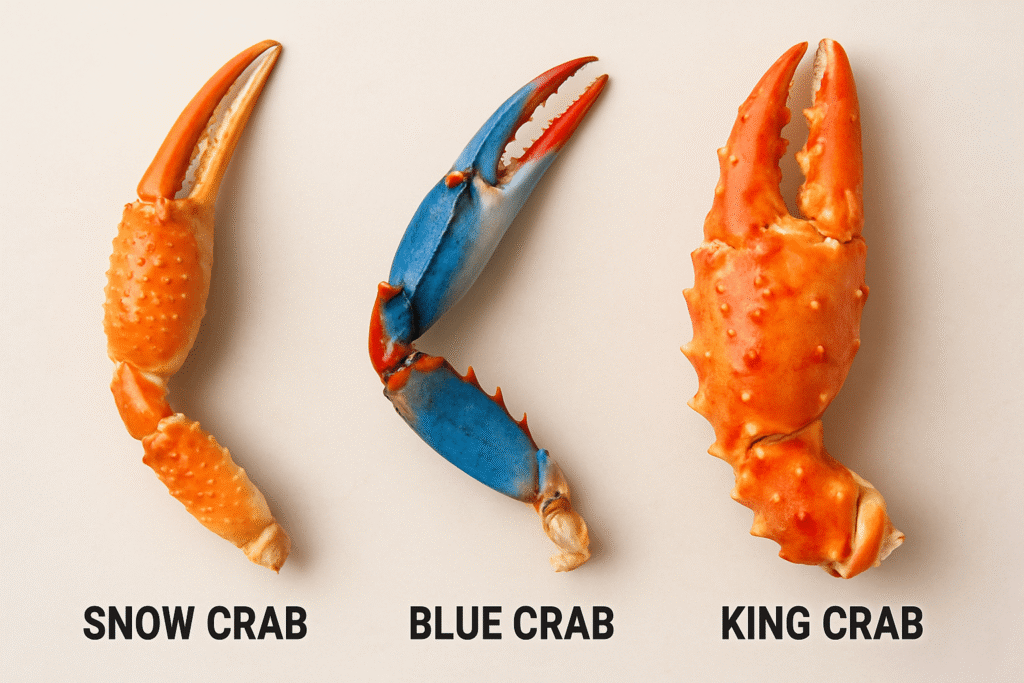
When it comes to crab claws, the culinary world offers a delightful variety, each with its unique characteristics. While snow crab claws are a star in their own right, it’s helpful to understand how they compare to other popular types like blue crab and king crab.
Snow Crab Claws: Known for their long, slender legs and sweet, delicate flavor, snow crab claws are often pre-cooked and easy to crack, making them a convenient option for quick meals or elegant appetizers. The meat is tender and flaky, with a subtle brininess that appeals to a wide range of palates. They are typically harvested from the cold waters of the North Atlantic and Arctic Oceans.
Blue Crab Claws: Blue crabs are smaller than snow crabs and are highly prized for their rich, buttery, and intensely sweet meat. They are commonly found in the Atlantic and Gulf Coasts of North America. Blue crab claws, while smaller, offer a distinct flavor profile that is often used in traditional Southern and Chesapeake Bay dishes. They require a bit more effort to extract the meat compared to snow crab claws.
King Crab Claws: King crab claws are significantly larger and more robust than both snow and blue crab claws. Their meat is known for its rich sweetness and firm, succulent texture, often compared to lobster. King crabs are primarily found in the frigid waters of the Bering Sea and North Pacific Ocean. Due to their size and limited harvesting season, king crab claws are generally more expensive and considered a premium delicacy.
Here’s a quick comparison:
| Feature | Snow Crab Claws | Blue Crab Claws | King Crab Claws |
| Size | Medium, long, and slender | Small to medium | Large and robust |
| Flavor | Sweet, delicate, subtle brininess | Rich, buttery, intensely sweet | Rich sweetness, often compared to lobster |
| Texture | Tender, flaky | Firm, succulent | Firm, succulent |
| Ease of Use | Pre-cooked, easy to crack | Requires more effort to extract meat | Large, relatively easy to extract meat |
| Habitat | North Atlantic, Arctic Oceans | Atlantic, Gulf Coasts of North America | Bering Sea, North Pacific Ocean |
| Cost | Moderate | Moderate | High |
Section 2 – Why Snow Crab Claws Stand Out
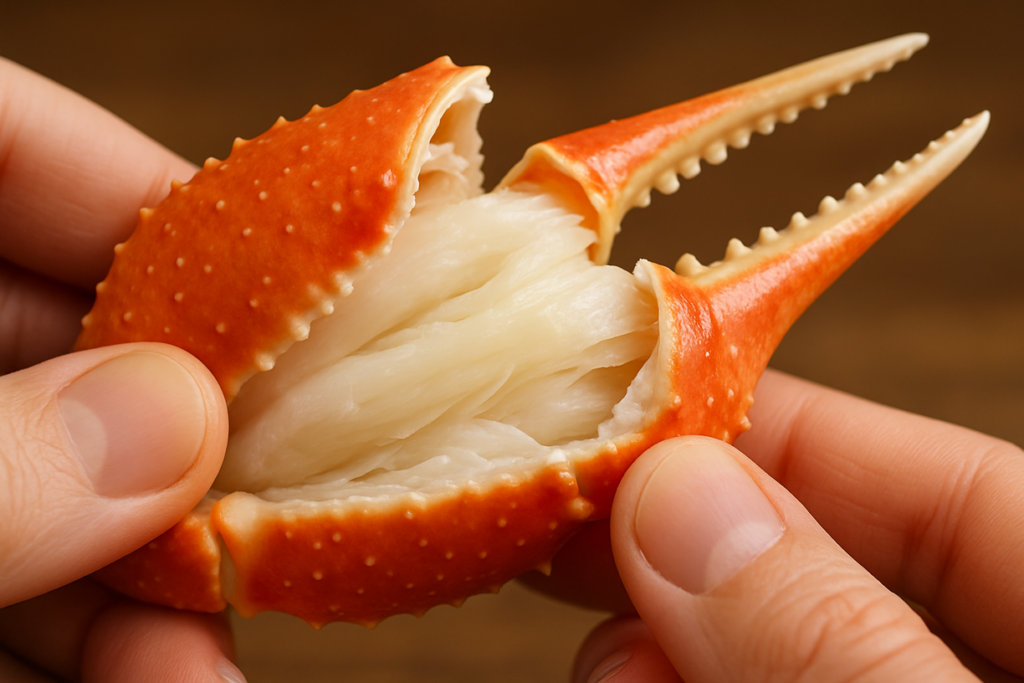
Among the diverse world of crab, snow crab claws truly stand out for several compelling reasons, making them a top choice for seafood lovers. Their unique combination of taste, convenience, and sustainable sourcing contributes to their widespread appeal.
Exquisite Taste: Snow crab claws are renowned for their distinctively sweet and delicate flavor. Unlike some other crab varieties that can be intensely briny, snow crab offers a more subtle, clean taste that allows its natural sweetness to shine through. This delicate flavor profile makes them incredibly versatile, pairing well with a variety of sauces and accompaniments without being overpowering. The meat is tender and flaky, providing a luxurious mouthfeel that is highly sought after.
Effortless Enjoyment: One of the most significant advantages of snow crab claws is their ease of use. Most snow crab claws available commercially are pre-cooked and often come with a natural break point, making them incredibly simple to prepare and enjoy. This pre-cooked seafood means you don’t have to worry about complex cooking procedures; a quick thaw and reheat are often all that’s needed. Their shells are also relatively easy to crack, allowing for quick access to the delicious crab meat inside, making them perfect for casual gatherings or elegant dinners where you want to minimize fuss and maximize enjoyment.
Responsible Sourcing: Snow crabs are typically harvested from the cold, pristine waters of the North Atlantic and Arctic Oceans. The fisheries are often well-managed, with strict regulations in place to ensure sustainability and protect the crab populations. This commitment to responsible sourcing means that when you enjoy snow crab claws, you can do so with the knowledge that you are supporting environmentally conscious practices. This focus on sustainability adds another layer of appeal for consumers who prioritize ethical and responsible food choices.
In summary, the delicate flavor, pre-cooked convenience, and sustainable sourcing of snow crab claws collectively contribute to their exceptional standing in the seafood market. They offer a premium experience that is both delicious and remarkably easy to enjoy.
Section 3 – How to Cook Snow Crab Claws
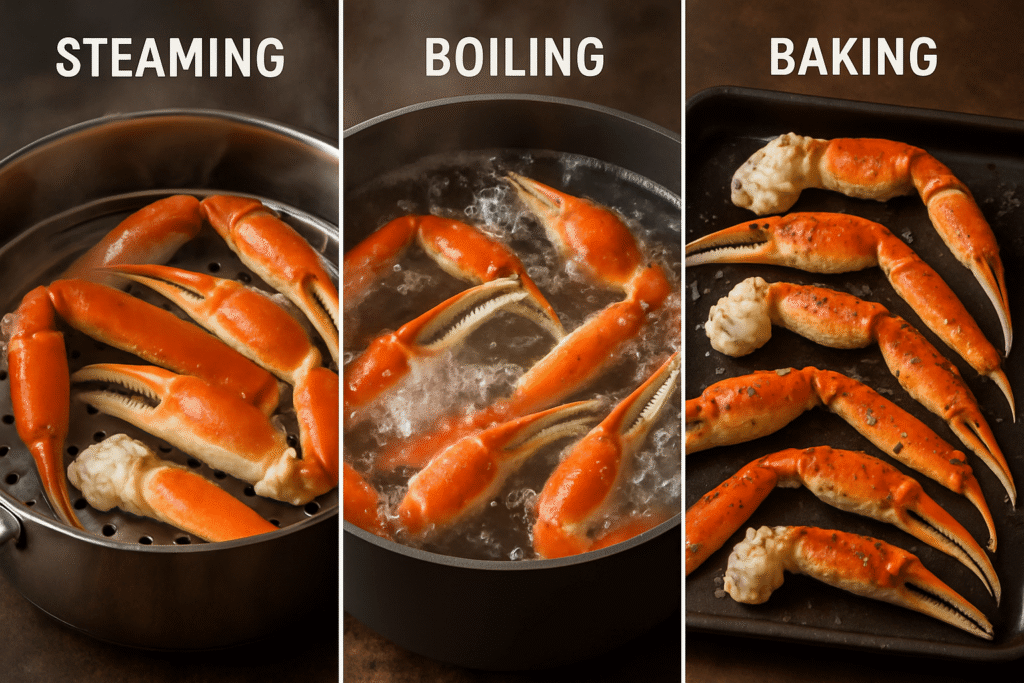
Snow crab claws are typically sold pre-cooked, which means your primary goal is to reheat them without overcooking, preserving their delicate flavor and tender texture. Here are some popular and effective methods for preparing snow crab claws:1. Steaming (Recommended for best flavor and texture):
Steaming is often considered the best method as it gently reheats the crab without waterlogging it, maintaining its natural sweetness and texture.
•Steps:
1.Fill a large pot with about an inch or two of water. You can add a pinch of salt, a lemon wedge, or a bay leaf to the water for added flavor.
2.Place a steamer basket inside the pot, ensuring it’s above the water level.
3.Add the snow crab claws to the steamer basket. Do not overcrowd the basket.
4.Bring the water to a rolling boil, then reduce the heat to medium-high.
5.Cover the pot tightly and steam for 5-7 minutes, or until the crab is heated through and fragrant. The shells may turn a brighter orange.
2. Boiling:
Boiling is a quick and easy method, but be careful not to overcook, as it can make the meat mushy.
•Steps:
1.Fill a large pot with water and bring it to a rolling boil. You can add salt to the water to mimic seawater.
2.Carefully add the snow crab claws to the boiling water.
3.Boil for 3-5 minutes. Since they are already cooked, you are just reheating them.
4.Remove the crab claws with tongs and drain well.
3. Baking (Oven):
Baking is a great option for reheating a larger quantity of crab claws and can infuse them with additional flavors.
•Steps:
1.Preheat your oven to 350°F (175°C).
2.Arrange the snow crab claws in a single layer on a baking sheet. You can brush them with melted butter, garlic, and herbs for extra flavor.
3.Add a small amount of water (about 1/4 cup) to the bottom of the baking sheet to create steam and prevent drying.
4.Cover the baking sheet tightly with aluminum foil.
5.Bake for 8-10 minutes, or until heated through.
4. Microwaving (Quickest method for small portions):
While not ideal for texture, microwaving is the fastest way to reheat a small portion of snow crab claws.
•Steps:
1.Place a few snow crab claws on a microwave-safe plate.
2.Add a tablespoon or two of water to the plate.
3.Cover the plate with a microwave-safe lid or damp paper towel.
4.Microwave on high for 1-2 minutes, checking frequently to avoid overcooking.
No matter which method you choose, serve your snow crab claws immediately with your favorite dipping sauces.
Section 4 – Serving Ideas & Pairings
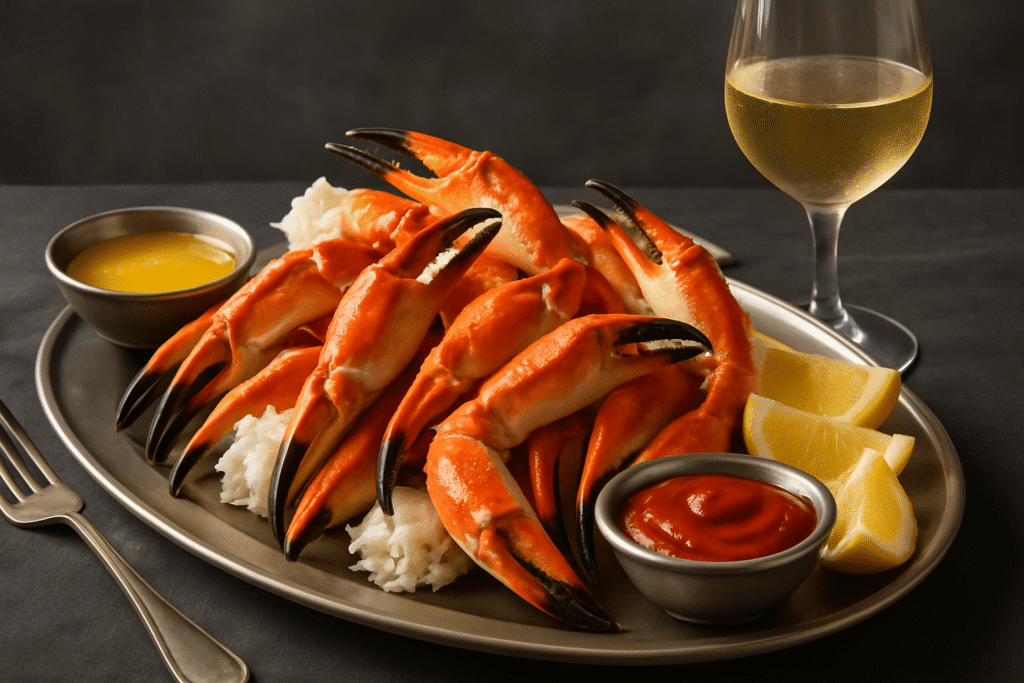
Snow crab claws, with their delicate flavor and elegant appearance, lend themselves beautifully to a variety of serving ideas and pairings. Whether you’re hosting a sophisticated dinner party or enjoying a casual meal, these tips will help you elevate your snow crab claw experience.
Classic Dipping Sauces:
The simplest and often most beloved accompaniment for snow crab claws is melted butter. You can enhance this classic by infusing it with garlic, lemon, or fresh herbs like parsley or dill. Other popular sauces include:
•Lemon-Garlic Butter: A staple that complements the crab’s sweetness.
•Cocktail Sauce: A tangy and slightly spicy option, often made with ketchup, horseradish, and Worcestershire sauce.
•Aioli: A creamy garlic mayonnaise that adds richness.
•Spicy Mayo: Mayonnaise mixed with sriracha or other chili sauces for a kick.
Complementary Salads:
Light and refreshing salads can provide a wonderful contrast to the richness of the crab meat. Consider:
•Simple Green Salad: Tossed with a light vinaigrette.
•Coleslaw: A creamy or vinegar-based coleslaw can add crunch and tang.
•Cucumber and Dill Salad: Fresh and crisp, perfect for balancing the seafood.
Wine Pairings:
The delicate flavor of snow crab claws pairs exceptionally well with crisp, dry white wines. Here are some excellent choices:
•Sauvignon Blanc: Its bright acidity and citrus notes complement the crab’s sweetness.
•Chardonnay (unoaked or lightly oaked): Offers a fuller body with notes of apple or pear that can stand up to the crab without overpowering it.
•Pinot Grigio: A light-bodied, refreshing wine with subtle fruit flavors.
•Champagne or Sparkling Wine: The effervescence and crispness cut through the richness of the crab and cleanse the palate, making it a truly celebratory pairing.
•Albariño: A Spanish white wine known for its aromatic, often saline, and citrusy profile, which beautifully complements seafood.
Elegant Presentation:
Presentation can significantly enhance the dining experience. Here are some ideas for an elegant display:
•Chilled Platter: Arrange pre-chilled snow crab claws on a bed of crushed ice with lemon wedges and fresh parsley for garnish. This keeps them cool and visually appealing.
•Individual Servings: For a more refined touch, serve a few claws per person on individual plates with a small ramekin of melted butter or sauce.
•Seafood Boil Style: For a more rustic and communal experience, serve them on a large platter or directly on a newspaper-covered table with corn on the cob, potatoes, and sausages.
By thoughtfully selecting your sauces, side dishes, and beverages, you can create a memorable culinary experience centered around the exquisite taste of snow crab claws.
Section 5 – Where to Buy & How to Store
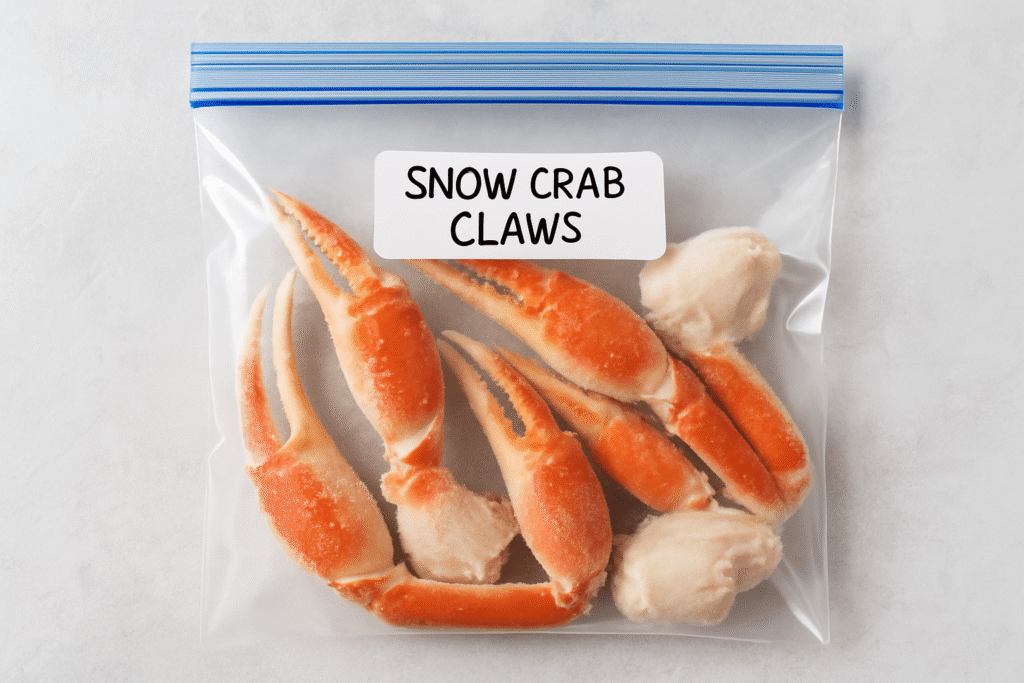
Knowing where to buy high-quality snow crab claws and how to store them properly is key to enjoying this seafood delicacy at its best. Here are some practical tips for buyers and home cooks.
Where to Buy Snow Crab Claws:
•Reputable Seafood Markets: Your local seafood market is often the best place to find fresh, high-quality snow crab claws. Look for markets with a good reputation for freshness and knowledgeable staff who can answer your questions about sourcing and quality.
•Online Seafood Retailers: Many reputable online seafood companies specialize in delivering frozen seafood directly to your door. This can be a convenient option, especially if you don’t have access to a good local market. Look for retailers that provide detailed information about their sourcing and harvesting practices.
•Grocery Stores: Many larger grocery stores have a seafood counter with a selection of frozen snow crab claws. Check the packaging for information on the origin and packing date.
What to Look For When Buying:
•Appearance: Look for claws that are bright in color and free from any discoloration or dark spots. The shells should be intact and not cracked or broken.
•Smell: Fresh snow crab claws should have a clean, slightly sweet, and oceanic smell. Avoid any that have a strong, fishy, or ammonia-like odor.
•Frozen vs. Thawed: Most snow crab claws are sold frozen to maintain their freshness. If you buy them thawed, make sure they are properly chilled and plan to use them within a day or two.
How to Store Snow Crab Claws:
•Refrigeration: If you purchase thawed snow crab claws, store them in the coldest part of your refrigerator (usually the bottom shelf) and consume them within 24-48 hours. Keep them in their original packaging or in a sealed container to prevent them from drying out.
•Freezing: If you buy frozen snow crab claws, you can store them in your freezer for up to six months. Ensure they are in airtight packaging to prevent freezer burn. When you’re ready to use them, thaw them in the refrigerator overnight. For a quicker thaw, you can place them in a colander under cold running water for a few minutes.
By following these tips, you can ensure that you are purchasing the best possible snow crab claws and storing them correctly to preserve their delicate flavor and texture until you are ready to enjoy them.
Section 6 – FAQs
Here are some frequently asked questions about snow crab claws:
How many snow crab claws per person?
As a general guideline, plan for about 1 to 1.5 pounds of snow crab claws per person if it’s the main course. If serving as an appetizer or part of a larger meal, 0.5 to 1 pound per person should suffice. Keep in mind that snow crab claws are mostly shell, so the meat yield is lower than the total weight.
Are snow crab claws pre-cooked?
Yes, almost all snow crab claws sold commercially are pre-cooked and flash-frozen immediately after being caught to preserve their freshness and flavor. This means you only need to reheat them before serving, not cook them from raw
What is the best way to reheat snow crab claws
Steaming is generally considered the best method for reheating snow crab claws as it helps retain their moisture and delicate flavor. Simply place them in a steamer basket over boiling water for 5-7 minutes, or until heated through. Boiling, baking, and even microwaving are also options, but steaming yields the best results.
What do snow crab claws taste like?
Snow crab claws have a distinctively sweet, delicate, and slightly briny flavor. The meat is tender and flaky, making it a highly sought-after seafood delicacy. Their flavor is milder compared to some other crab varieties, allowing them to pair well with various sauces and seasonings.
Can you eat snow crab claws cold?
Yes, since snow crab claws are pre-cooked, they can be enjoyed cold. Many people prefer them chilled, especially when served as part of a seafood platter or in salads. Just thaw them properly in the refrigerator before serving.
Conclusion
Snow crab claws offer an unparalleled seafood experience, combining exquisite delicate flavor with remarkable convenience. Their tender, pre-cooked seafood meat and easy-to-crack shells make them a perfect choice for any occasion, from a quick weeknight meal to an elegant dinner party. By understanding the different types of crab, mastering simple cooking methods, and exploring various serving ideas, you can fully appreciate why snow crab claws stand out as a true culinary delight. So, whether you’re a seasoned seafood enthusiast or new to the world of crab, we encourage you to try snow crab claws and discover the delicious simplicity and luxury they bring to your table. Dive in and savor the taste of the ocean!